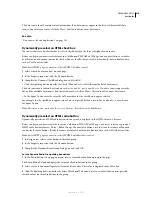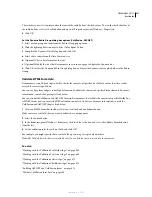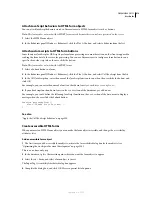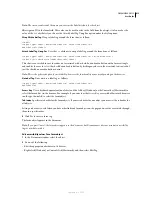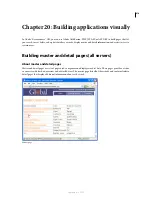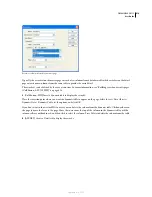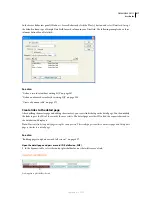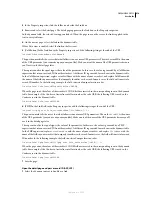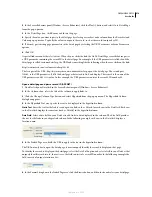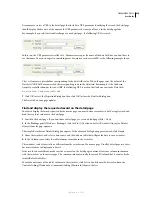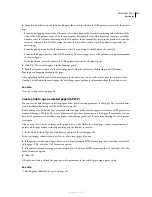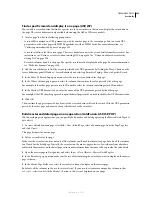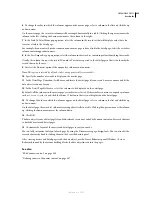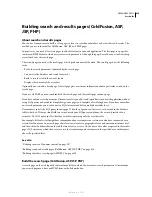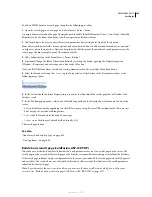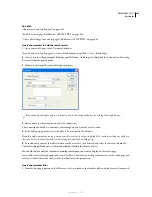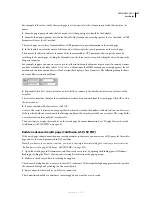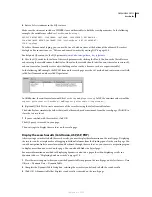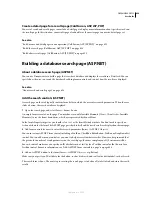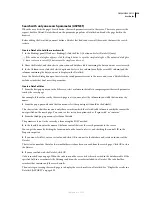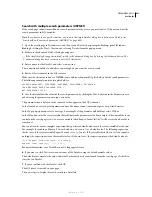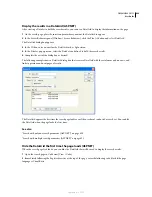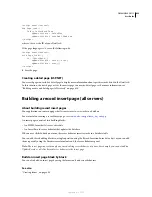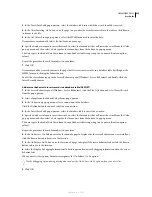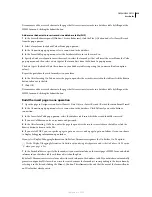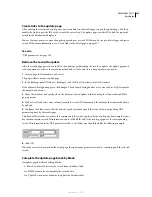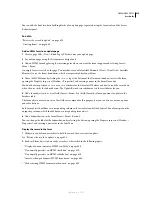
DREAMWEAVER CS3
User Guide
624
Building search and results pages (ColdFusion, ASP,
JSP, PHP)
About search and results pages
You can use Dreamweaver to build a set of pages to let users search your database and view the search results. The
method you use is identical for ColdFusion, ASP, JSP, and PHP pages.
In most cases, you need at least two pages to add this feature to your web application. The first page is a page that
contains an HTML form in which users enter search parameters. Although this page doesn’t do any actual searching,
it is referred to as the search page.
The second page you need is the results page, which performs most of the work. The result’s page does the following
tasks:
•
Reads the search parameters submitted by the search page
•
Connects to the database and search for records
•
Builds a recordset with the records found
•
Displays the contents of the recordset
Optionally, you can add a detail page. A detail page gives users more information about a particular record on the
results page.
If you use ASP.NET, you can combine both the search page and the results page into one page.
If you have only one search parameter, Dreamweaver lets you add search capabilities to your web application without
using SQL queries and variables. Simply design your pages and complete a few dialog boxes. If you have more than
one search parameter, you need to write a SQL statement and define multiple variables for it.
Dreamweaver inserts the SQL query in your page. When the page runs on the server, each record in the database
table is checked. If the specified field in a record meets your SQL query conditions, the record is included in a
recordset. The SQL query in effect builds a recordset containing only the search results.
For example, field sales staff might have information about customers in a certain area who have incomes above a
certain level. In a form on a search page, the sales associate enters a geographical area and a minimum income level,
and then clicks the Submit button to send the two values to a server. On the server, the values are passed to the results
page’s SQL statement, which then creates a recordset containing only customers in the specified area with incomes
above the specified level.
See also
“Defining sources of dynamic content” on page 547
“Building search and results pages (ColdFusion, ASP, JSP, PHP)” on page 624
“Building a database search page (ASP.NET)” on page 629
Build the search page (ColdFusion, ASP, JSP, PHP)
A search page on the web typically contains form fields in which the user enters search parameters. At minimum,
your search page must have an HTML form with a Submit button.
September 4, 2007

